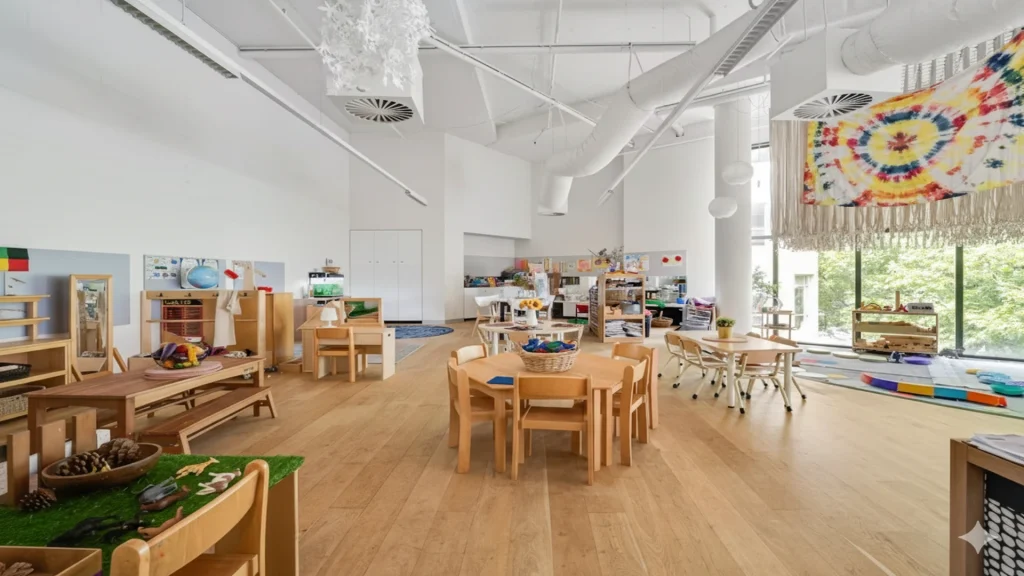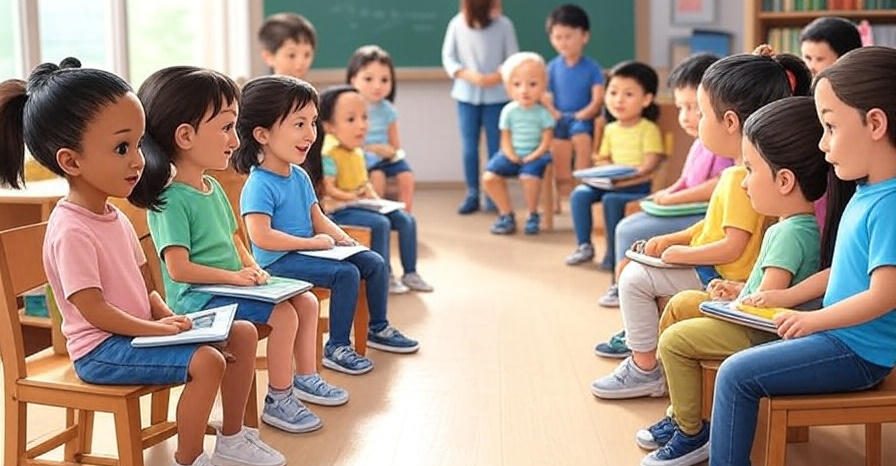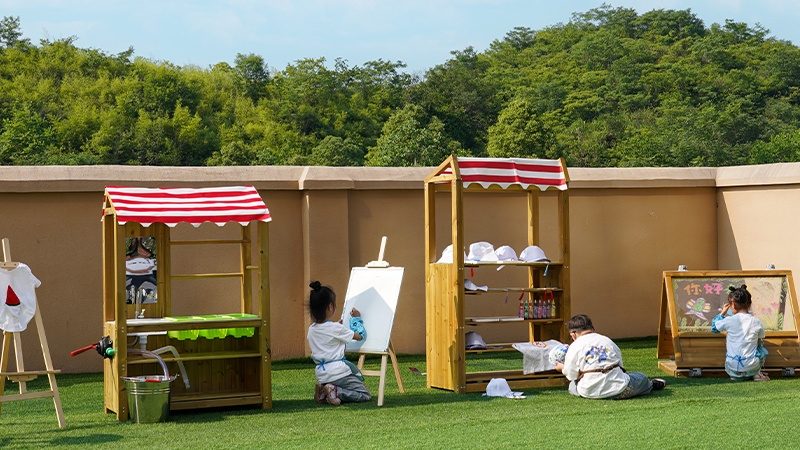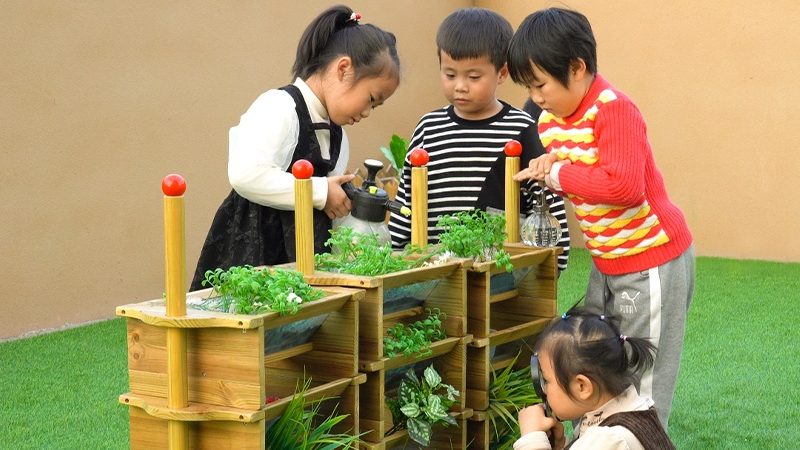Creating an effective pre K classroom layout is one of the most important investments early childhood education institutions can make. Research consistently shows that thoughtfully designed learning environments directly impact children’s cognitive development, social skills, and overall educational outcomes. As manufacturers of high-quality wooden educational toys, we understand how the right furniture and materials can transform any space into a dynamic learning environment.
Implementing a well-organized pre k classroom layout helps create a stimulating environment for children. In a pre k classroom layout, every item should serve a purpose, contributing to the educational experience.
Why Pre K Classroom Layout Matters More Than You Think
The impact of a pre k classroom layout on learning outcomes cannot be overstated. A well-crafted pre k classroom layout ensures that children are engaged and active participants in their learning.
In a successful pre K classroom layout, the physical environment serves as what Reggio Emilia educators call the “third teacher” – working alongside parents and educators to facilitate learning. A well-designed classroom layout can:
The physical environment serves as what Reggio Emilia educators call the “third teacher” – working alongside parents and educators to facilitate learning. A well-designed classroom layout can:
- Boost cognitive development by 25% according to studies from the National Association for the Education of Young Children
- Improve behavior management through clear boundaries and purposeful zones
- Enhance teacher effectiveness by supporting active supervision and smooth transitions
- Foster independence as children learn to navigate and use their environment autonomously

Essential Areas Every Pre-K Classroom Needs
1. Circle Time Area
The heart of your classroom should be a welcoming circle time space where children gather for group activities, stories, and discussions. This area requires:
- Comfortable, child-sized seating
- Clear visual schedules and anchor charts
- Easy access to teaching materials
- Adequate space for movement and participation

2. Dramatic Play Center
Research from Harvard’s Center on the Developing Child shows that pretend play is crucial for executive function development. Your dramatic play area should include:
- A child-sized kitchen setup with wooden appliances
- Dress-up clothes and accessories
- Props that rotate based on themes (restaurant, post office, veterinary clinic)
- Storage solutions that encourage independence
Pro tip: Our wooden kitchen sets are designed specifically for institutional use, offering durability that withstands daily classroom activities.
Additionally, a pre k classroom layout that emphasizes different learning zones can promote various types of play and interaction, enriching children’s experiences.
3. Block and Construction Area
Building and construction activities develop spatial reasoning, math concepts, and problem-solving skills. Essential elements include:
- Variety of wooden blocks in different shapes and sizes
- Storage systems with visual labels
- Space for both individual and collaborative building
- Display area for children’s creations
4. Art and Creativity Station
Creativity centers should offer both structured and open-ended activities:
- Easels for painting and drawing
- Tables for collaborative art projects
- Organized storage for materials
- Display space for showcasing children’s work

5. Quiet Reading Corner
A calm, comfortable space for literacy development featuring:
- Soft seating and cushions
- Book displays at child height
- Good lighting (natural when possible)
- Cozy atmosphere that invites extended reading
Consider how a well-thought-out pre k classroom layout can influence children’s social dynamics and encourage positive behaviors in the classroom.
As you design your pre k classroom layout, think about how open spaces can facilitate movement and exploration, which are key aspects of early learning.
6. Sensory Exploration Area
Sensory play supports neural development and self-regulation:
- Water and sand tables with rotating materials
- Tactile bins with natural materials
- Tools for exploration and investigation
- Easy-to-clean surfaces and storage
Key Design Principles for Effective Layouts
Consider Traffic Flow and Safety
A creative pre k classroom layout also allows for a variety of activities, from art to sensory exploration, making it essential for comprehensive development.
According to Child Care Aware of America, proper traffic flow prevents the “racetrack effect” where children run in circles around furniture. Design principles include:
- Create clear pathways between areas
- Ensure all areas are visible from teacher positions
- Eliminate blind spots and isolated corners
- Position quiet areas away from high-activity zones
Implement the Zoning Strategy
Research supports dividing classrooms into distinct learning zones:
- Quiet zones: Reading, puzzles, individual work
- Active zones: Blocks, dramatic play, gross motor activities
- Messy zones: Art, sensory play, science experiments
- Group zones: Circle time, collaborative projects
Accommodate Different Learning Styles
Modern early childhood education recognizes diverse learning needs:
- Visual learners benefit from labeled storage and picture schedules
- Kinesthetic learners need movement opportunities and hands-on materials
- Auditory learners thrive with music centers and listening stations
- Social learners require collaborative spaces and group work areas
Emphasizing the importance of a structured yet adaptable pre k classroom layout is crucial in promoting a positive learning experience.
Size-Specific Layout Solutions
Small Classrooms (1-20 children)
Maximize limited space with:
- Multi-functional furniture that serves multiple purposes
- Vertical storage solutions
- Mobile carts that can be moved as needed
- Compact wooden learning centers designed for efficiency
Medium Classrooms (20-50 children)
Balance structure with flexibility through:
- Clearly defined zones with visual boundaries
- Multiple activity options within each center
- Adequate storage for rotating materials
- Strategic placement of popular centers
Large Classrooms (50+ children)
Manage larger spaces by:
- Creating sub-environments within the larger room
- Using furniture as natural dividers
- Establishing multiple instances of popular centers
- Implementing strong organizational systems
Modern Trends in Pre-K Classroom Design
Flexible Learning Environments
Contemporary research from the Organisation for Economic Co-operation and Development emphasizes adaptability. Modern classrooms feature:
This flexibility in the pre k classroom layout helps accommodate different learning styles and preferences, fostering a nurturing educational environment.
- Modular furniture that can be easily reconfigured
- Open spaces that accommodate various group sizes
- Technology integration that enhances rather than replaces hands-on learning
Nature-Based Learning Spaces
Bringing the outdoors inside supports children’s connection to the natural world:
- Natural materials like wood, stone, and plants
- Large windows and natural lighting
- Outdoor classroom extensions when possible
- Wooden toys and furniture that connect children to natural materials

Inclusive Design Principles
A well-considered pre k classroom layout can make all the difference in how children interact, learn, and grow together.
Creating environments that welcome all learners requires:
- Accessible pathways for children with mobility needs
- Sensory-friendly spaces for children with processing differences
- Culturally responsive materials and representations
- Multiple ways to engage with each learning area
Implementation Strategy: Getting Started
Phase 1: Assessment (Weeks 1-2)
- Inventory existing furniture and materials
- Identify non-negotiable fixed elements (outlets, built-ins)
- Survey staff about current challenges and needs
- Observe children’s natural movement patterns
Phase 2: Planning (Weeks 3-4)
- Sketch potential layouts considering all factors
- Research and budget for new furniture and materials
- Plan for gradual implementation to minimize disruption
- Coordinate with staff on timeline and logistics
Phase 3: Implementation (Weeks 5-8)
In summary, the choices you make in your pre k classroom layout will create a lasting impression on the children’s learning journey.
- Start with essential areas (circle time, dramatic play)
- Add centers gradually as children adjust to new routines
- Monitor effectiveness and make adjustments
- Document what works for future reference
The Role of Quality Materials in Classroom Success
The furniture and toys you choose significantly impact your classroom’s effectiveness. Wooden educational materials offer unique advantages:
- Durability: Withstand years of daily use in institutional settings
- Safety: Natural materials without harmful chemicals
- Aesthetics: Create warm, inviting environments that feel less institutional
- Sustainability: Environmentally responsible choice that teaches children about caring for our planet
- Sensory benefits: Natural textures and weight provide rich tactile experiences
Measuring Success: What to Look For
A well-designed classroom layout should demonstrate:
- Children moving purposefully between areas
- Minimal behavior management issues
- Extended engagement in learning activities
- Easy transitions between activities
- Teachers able to supervise effectively while facilitating learning
According to research from Zero to Three, children in well-designed environments show improved self-regulation, social skills, and academic readiness.
Budget-Conscious Implementation Tips
Creating an effective layout doesn’t require a complete overhaul:
- Start with organization: Often, simply reorganizing existing materials can dramatically improve functionality
- Invest in key pieces: Focus budget on high-impact items like quality wooden learning centers that will last for years
- DIY solutions: Create dividers, labels, and storage solutions in-house
- Gradual upgrades: Implement changes over time as budget allows
- Grant opportunities: Research local and national grants for early childhood education improvements
Common Mistakes to Avoid
Learning from others’ experiences can save time and resources:
- Overcrowding: Too many materials can overwhelm children and hinder learning
- Poor sight lines: Teachers need clear views of all areas for effective supervision
- Ignoring noise levels: Failing to separate quiet and active areas creates chaos
- Inflexible design: Rigid layouts can’t adapt to changing needs throughout the year
- Inadequate storage: Insufficient organization leads to constant clutter and frustration
Future-Proofing Your Investment
Design with longevity in mind:
- Choose modular systems that can be reconfigured
- Invest in quality pieces that will last through multiple classes
- Plan for technology integration without compromising hands-on learning
- Consider changing educational philosophies and regulatory requirements
Conclusion: Creating Spaces Where Learning Thrives
An effective pre k classroom layout is an investment in children’s futures. By thoughtfully considering how space, furniture, and materials work together, early childhood education institutions can create environments that support optimal learning and development.
The key is finding the right balance of structure and flexibility, quiet and active spaces, individual and group learning opportunities. With quality wooden educational furniture and toys as your foundation, you can create a classroom environment that serves as a true “third teacher” – inspiring, guiding, and supporting young learners as they discover the joy of learning.
Ready to transform your pre-K classroom? Explore our complete collection of educational furniture and toys designed specifically for early childhood education institutions. Contact our education specialists today for a personalized consultation on creating the perfect learning environment for your students.